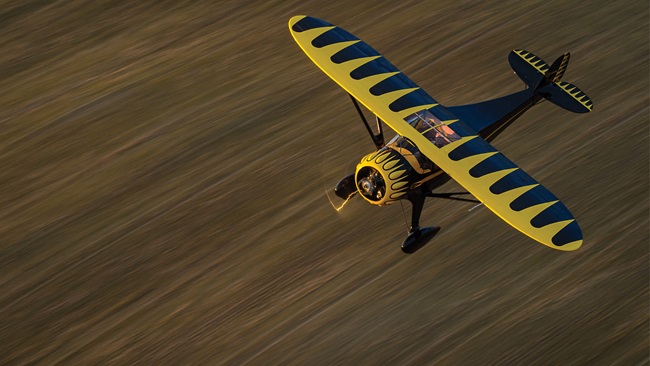Many careers in one
Aviation and Joe Toskes have been good for each other
Like many people who hammer a living out of general aviation, Joe Toskes has been a man of many parts.
Specialization doesn’t cut it in GA the way it does in other fields. Many who have survived and prospered in aviation have done so by developing a diverse set of skills, adapting to a competitive business known for its economic sensitivities.
One of those kids who washed planes and pumped gas to fly grew up to be Joseph Toskes, a 26,200-hour pilot and holder of both the FAA Wright Brothers Master Pilot Award and the Charles Taylor Master Mechanic Award. Now 75, Toskes has reached the giving-back point in a career in which he has toiled as a pilot, airline pilot, flight instructor, dispatcher, aircraft-management company CEO, U.S. Air Force jet fighter mechanic, and organization maintenance director, to list a few of the bullet points on his résumé.
From early on, Toskes was a kid on a mission around the airports of eastern Maryland. “I never wanted to be a cowboy or a fireman or a policeman,” he said in an interview. “I just wanted to be a pilot.”
After getting started by working the line and helping out wherever else he could, including the maintenance shop, Toskes joined the Air Force in 1959 and served until 1963 gaining experience as a mechanic for the North American F–100, the McDonnell F–101, and the Lockheed T–33.
Returning to the civilian sector, he held numerous aviation jobs while earning pilot ratings. He worked as a mechanic’s helper at Lee Airport, baggage handler and ground operations worker for TWA at Baltimore/Washington International Airport, and as a line attendant and mechanic’s helper at Essex Skypark.
In 1966 he became a working pilot, flying cargo at night from Baltimore/Washington International Airport in Beechcraft Barons and other twins, and carrying passengers in Beechcraft Queen Airs.
Next came a two-year period of flying Dornier Do 28 twins on a run from that airport to the area’s other two major airports. The six round trips a day gave him more than 1,000 landings at the then-Washington National Airport in a single year, he said.
Flight instructing became his focus during the 1969-1971 period at Essex Skypark, where he trained private, instrument, commercial, and multiengine students, earning a Gold Seal for his flight instructor ticket. According to his resume, he has logged 2,400 hours as an instructor. He also performed routine maintenance and inspections of the flight school’s Cessna 172s and Cessna 182s.
Now firmly established, his career path led him to pilot, mechanic, and chief pilot positions at a wide variety of GA businesses putting him in the cockpits of other makes and models including twin Cessnas, an Aero Commander 681, and a Beechcraft King Air 90. He also supervised their maintenance.
At Martin State Airport he would work as chief pilot of a charter operation and as chief instructor of the company’s flight school. He established other so-called Part 135 operations, flying several kinds of light twins. By the 1980s he had been a pilot for several major companies, served as an aviation consultant, and flown as flight engineer on Boeing 727s in airline cargo operations.
After an off-airport stint as a bank aircraft loan officer, Toskes added the Airbus 300 to his list of aircraft while serving as a flight engineer for Continental Airlines, based in Newark, New Jersey.
An eight-year corporate role as chief pilot of the King Air 90 and a Cessna Citation 550 jet followed; when the company shut down its flight department, Toskes founded his own aircraft management and charter company, flying King Air-family turboprops and several Cessna Citation jets. He continues to run the company, AmAv Inc., today.
For the last several months he also has served as the aircraft maintenance officer for the Maryland Wing of the Civil Air Patrol, directing and supervising the upkeep of the wing’s 10 aircraft.
Reminiscing about his experiences, Toskes’s narrative overflows with colorful descriptions of the aviation characters he worked for, learned from, and will never forget. Most had the requisite and seemingly incompatible traits of irascibility and well-concealed hearts of gold: Of an early boss who hired him as an airplane washer, Toskes recalled, “He was good to me,” but added, “He’d fire me every other week, always right around payday.”
On the subject of compensation, he also recalled a generous reward he received after a year’s work from another employer who hired him to wash airplanes for $1.50 an hour: a raise to $1.52 an hour. The windfall went straight to his flight training fund, Toskes said.
Today it is the opportunities those employers offered that keep the memories alive, and recently motivated him to reach out to the Civil Air Patrol—he’s a captain in the Maryland wing—to offer his maintenance expertise.
“A friend said, ‘When you get to a certain point, you owe it to give back,’” Toskes said. “We owe it to the other people coming up to take them and help them.”




